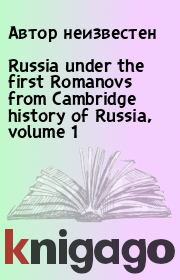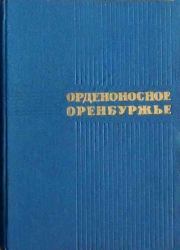Автор неизвестен - Russia under the first Romanovs from Cambridge history of Russia, volume 1
 | Название: | Russia under the first Romanovs from Cambridge history of Russia, volume 1 |
Автор: | Автор неизвестен | |
Жанр: | История: прочее | |
Изадано в серии: | неизвестно | |
Издательство: | неизвестно | |
Год издания: | - | |
ISBN: | неизвестно | |
Отзывы: | Комментировать | |
Рейтинг: | ||
Поделись книгой с друзьями! Помощь сайту: донат на оплату сервера | ||
Краткое содержание книги "Russia under the first Romanovs from Cambridge history of Russia, volume 1"
Аннотация к этой книге отсутствует.
Читаем онлайн "Russia under the first Romanovs from Cambridge history of Russia, volume 1". [Страница - 2]
- 1
- 2
- 3
- 4
- . . .
- последняя (82) »
As Figure 19.1 suggests, servitors sometimes moved through the ranks. The rules for entry into and promotion through the upper ranks were as follows.[8]The men in the three duma ranks above dumnyi d'iak (boiarin, okol'nichii, dumnyi dvorianin) were generally recruited from hereditary servitors in the sub-duma court ranks. Elected hereditary servitors could be appointed to any of these three ranks (that is, not dumnyi d'iak). Once they had assumed a rank, they could progress upward, for example, from dumnyi dvorianin to okol'nichii or from okol'nichii to boiarin. Ranks could not be skipped after entry - one could not go directly from dumnyi dvorianin to boiarin. Dumnye d'iaki were generally recruited from the ranks of d'iaki who were themselves recruited from clerks (pod'iachie), all of whom were men of lower birth.[9] Like their hereditary counterparts in the duma cohort, they could progress through ranks after appointment, again, without skipping.
To simplify a bit, the game of Muscovite politics had as its goal either advancement to the high ranks (for individuals and their families) or control of the composition of these ranks (for the royal family, or blocs of allied families). It bears mentioning that seventeenth-century politics had very little to do with policies and everything to do with persons. There may have been debate on this or that issue, but, as we have noted, everyone in the sovereign's court was (to continue our metaphor) on the same team and pursued the same goal - the maintenance and, if possible, the expansion of the elite's interests.15 Certainly there was conflict over issues. But it is telling that the Muscovites never developed a formal institution that might represent differing political agendas among notables. None was needed. The prime political question, it appears, was always who would pursue this common agenda, and only rarely whether it should be pursued.
There were, in essence, three players in this contest.[10] First, there was the tsar himself. In theory, he made all appointments to and promotions through the ranks. Yet in fact he did not rule alone, but rather with the aid of close relatives, advisers and mentors.[11] The existence of a small retinue of advisers around the tsar was recognised by the Muscovites themselves: Grigorii Kotoshikhin, the treasonous scribe who penned the only indigenous description of the Muscovite political system, explicitly calls them the 'close people' (blizhnie liudi).[12] These confidants would and could bend the tsar's ear when it came to appointments and promotions. The second major class of players at the Muscovite court were old elite servitors, that is, men of very high, heritable status whose families traditionally held positions in the duma ranks. These were Muscovy's aristocrats: for centuries, they had commanded Muscovy's armies, administered Muscovy's central offices, and governed Muscovy's far- flung territories.[13] Their right to high offices was guarded by mestnichestvo,
The tsar and his retinue
4fil,
![Книгаго, чтение книги «Russia under the first Romanovs from Cambridge history of Russia, volume 1» [Картинка № 2] Книгаго: Russia under the first Romanovs from Cambridge history of Russia, volume 1. Иллюстрация № 2](/icl/i/28/218428/img_1.jpg)
Lower-status courtiers
[2,000 men/1,000 families] Stolfniki Dvoriane moskovskie Striapchie Zhil'tsy
![Книгаго, чтение книги «Russia under the first Romanovs from Cambridge history of Russia, volume 1» [Картинка № 3] Книгаго: Russia under the first Romanovs from Cambridge history of Russia, volume 1. Иллюстрация № 3](/icl/i/28/218428/img_2.jpg)
D'iaki
Administrative class
Figure 19.2. The sovereign's court (c.1620)
[2-4 f/milies]
The traditional elite
[30 m/n/20 faMies]
Boyars Okol'nichie
)umnye dvoriane Dumnye d'iaki
Younger members of the old\lite
early Russia's mechanism for protecting the order of precedence.[14] Finally, we have men and families serving in the lower orders of the sovereign's court - the thousands of stol'niki, dvoriane moskovskie, and striapchie who occupied minor offices in Moscow and the provinces. They could never reasonably hope to win appointments to the duma. Figure 19.2 describes the three interest groups within the system of ranks.
The contest over the duma ranks was not a fair one. The tsar held the most power - he, as we have said, made all the appointments. The old elite had considerable though less power - by Muscovite tradition, elite families had a special claim on the upper ranks, often passing them on through several generations. And the mass of courtiers had the least power - only very occasionally would the tsar reach down into the lower rungs ofthe court to elevate a common stol'nik, but the possibility was always open.
Each of these parties deployed different strategies to gain victory. The tsar's course was one of balance: he attempted to distribute just enough of the ranks to elite servitors so as to guarantee their allegiance, while at the same time reserving a portion for the purposes of patronage, reward of merit, or some
other end. Members of the old elite pursued a strategy of maintenance: they fought to preserve their hold on the duma ranks by keeping new servitors out ofexisting positions and preventing the tsar from creating new posts. The common courtiers' strategy was offensive: they used a variety of mechanisms to win favour with the tsar or elite (service, marriage alliances, etc.) in order to gain a place among the duma men.
Who won? A brief overview of seventeenth-century high politics
As Michael Romanov ascended the throne in 1613, he and the coalition of forces that supported him faced serious difficulties. There were several claimants to the crown (some arguably more legitimate than Mikhail Fedorovich), the country was occupied by Swedes, Poles and numerous rebel bands, and the economy was in shambles after many years of bloody civil war. No one was really sure who the 'true tsar' was. The Romanov party did the only thing it could to maintain power: issue a 'national' call to eject the foreigners, declare a de facto amnesty to those in other camps and begin the slow and painful process of reducing its opponents - alien and domestic - one at a time. First, the rebels were defeated (Zarutskii, Mniszech), then the otherwise distracted Swedes were pacified (the Treaty of Stolbovo, 1617) and finally the Poles were ejected (the Truce of Deulino, 1618). These measures shored up the Romanovs' hold on power. The return of Michael's father, soon-to-be Patriarch Filaret, from Polish captivity in 1619 solidified it. For the first and last time in Russian history, father and son - the head of the Church and head of the state - ruled together.
Aside from this single (albeit dramatic) innovation, the diarchy pursued a moderate
--">- 1
- 2
- 3
- 4
- . . .
- последняя (82) »
Книги схожие с «Russia under the first Romanovs from Cambridge history of Russia, volume 1» по жанру, серии, автору или названию:
 |
| Автор неизвестен - Орденоносное Оренбуржье Жанр: История: прочее Год издания: 1968 |
 |
| Олег Анатольевич Омельченко - Всеобщая история государства и права. Том 1 Жанр: История: прочее Год издания: 2000 |
 |
| Валерий Алексеевич Рыжов - Веселие на Руси Жанр: История: прочее Год издания: 2006 |
 |
| Александр Юрьевич Ватлин - Австрия в ХХ веке Жанр: История: прочее Год издания: 2014 |
Другие книги автора « »:
 |
| Автор неизвестен - Ключ к Псалтири Жанр: Религия Год издания: 2002 |
 |
| Автор неизвестен - Советуем приготовить. Рецепты на все вкусы и возможности Жанр: Кулинария Год издания: 1994 |
 |
| Автор неизвестен - RetroShare для опытных юзеров Жанр: Околокомпьютерная литература Серия: Записная книжка шифропанка |



